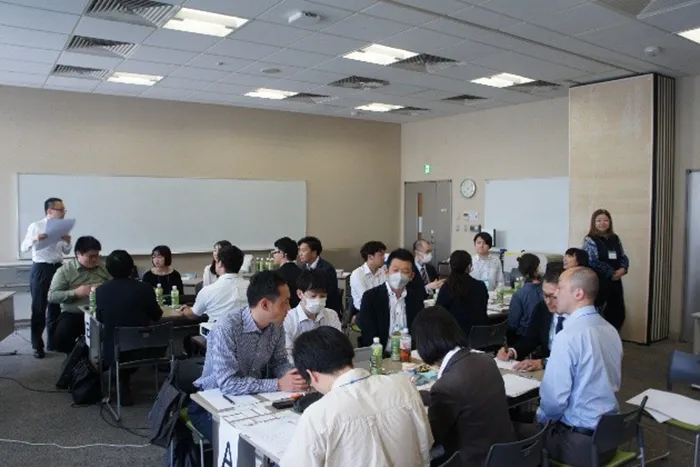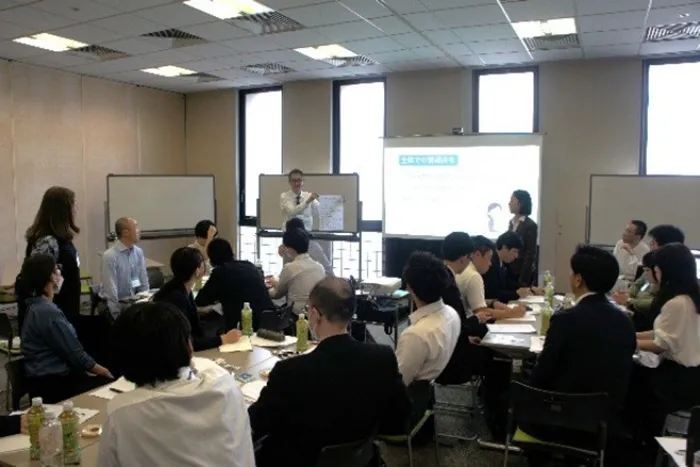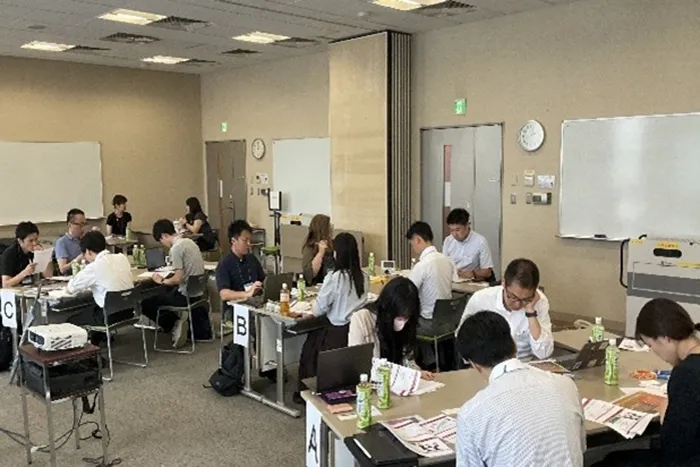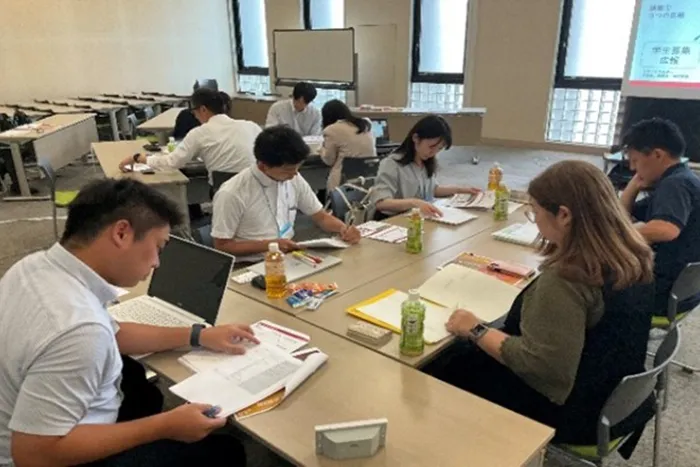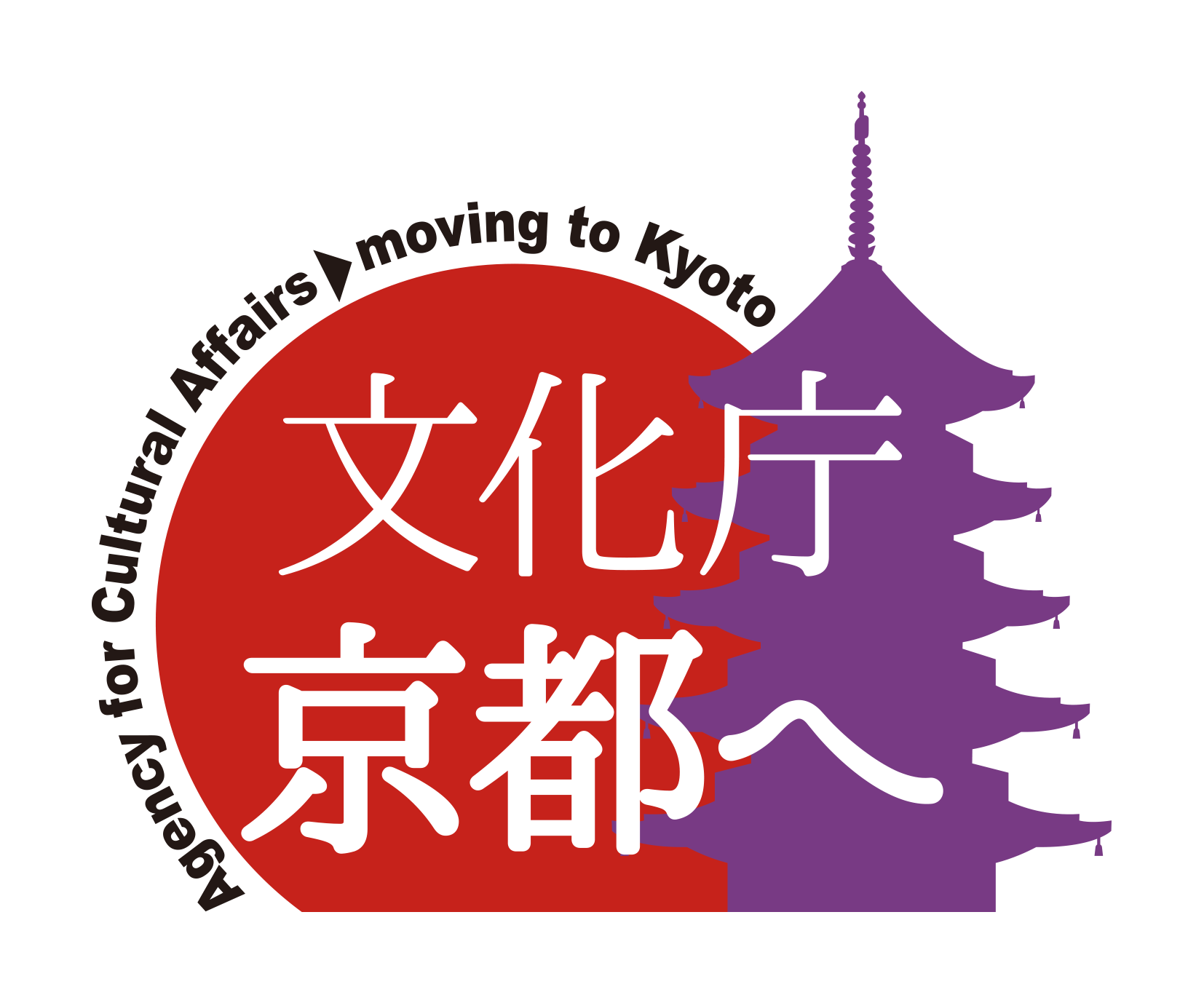- Business overview
- Kyoto High School-University Regional Network (KARN)
- Implementation Report
- Contact Information
Business overview
The declining birthrate is accelerating more than expected, and it is thought that an era of university selection will come. There are many concerns, especially about securing Japanese students and attracting international students, which is expected due to the decline in the 18-year-old population in the Kinki region. In addition, considering the increase in school recommendation-type selection and comprehensive selection, the introduction of inquiry-based evaluation-type entrance exams, and the expected changes in educational content from the GIGA School Initiative that actively promotes ICT education, each university will need to design new selection and connecting education in order to achieve high school-university transition. Therefore
, we will implement a project called “Kyoto High School-University Connectivity Regional Network (KARN)” for high school and university faculty and staff in Kyoto Prefecture, with the aim of strengthening the university admissions system throughout Kyoto, promoting its appeal, and developing and networking human resources who can realize entrance exam reform and high school-university connection.
Kyoto Articulation Regional Network (
Abbreviation: KARN )
- Participation fee
- free
- Organizer
- Kyoto High School-University Collaborative Research Council (Kyoto Prefectural Board of Education/Kyoto City Board of Education/Kyoto Prefectural Association of Private Junior and Senior High Schools/Kyoto Chamber of Commerce and Industry/University Consortium Kyoto, a public interest incorporated foundation)
| Session 1: “Understanding University Entrance Exams from the Basics – Accurately Grasping Admission Systems and Data to Consider the Future of Universities” | |
|---|---|
| Overview |
With the declining population of 18-year-olds, reforming university admissions and enhancing high school-university articulation have become urgent issues for universities. A crucial first step in advancing these reforms is to understand national policies and the current admission systems of public and private universities. It is also important to learn from other universities’ case studies, including the background of their implementation. Only by doing so can one objectively evaluate their own university’s admissions and proceed with reform using a “meta” perspective. In this session, participants will gain a proper understanding of demographic trends and entrance exam data—topics that are often vaguely understood—and explore the current state and future of universities in Kyoto. Through group work, participants will share examples and exchange information to build a network among university staff in Kyoto. A networking event will follow the program—please join us! |
| Date & Time | Saturday, May 18, 2024, 13:00–16:00 (Reception starts at 12:30) |
| Venue | Campus Plaza Kyoto, 5th Floor, Rooms 2, 3, and 4 |
| Speaker | Mr. Ryuji Sato (Specialist Staff in Charge of Admissions, Admissions Planning Division, Education and Student Support Department, Kyoto University) |
| Capacity | Maximum 30 participants (first-come, first-served) |
| Schedule |
13:00–13:10 Opening remarks, explanation of the session purpose and schedule 13:10–14:10 Lecture: “Accurately Understanding Japan’s Entrance Exam Systems and Data” 14:10–14:20 Break 14:20–15:10 Group work (case study presentations and information sharing from various universities) 15:10–15:20 Break 15:20–15:50 Plenary session: sharing insights and discovering applicable case examples 15:50–16:00 Closing remarks and feedback survey 17:30– Networking event |
| Session 2: “Is Your University Doing Advertising or Public Relations? Understanding the Difference in Student Recruitment PR” | |
|---|---|
| Overview |
As the number of 18-year-olds continues to decline, public relations (PR) plays an increasingly critical role in university management. With the rise of social media, PR duties have diversified, and in some cases, the focus has shifted to simply executing tasks rather than achieving strategic objectives. This program aims to help participants understand the full picture of university PR, distinguish whether their work is “advertising” or “public relations,” and objectively clarify the purpose of each task. Participants will also explore the purposes and stakeholders involved in initiatives such as open campuses, high school visits, and media advertisements (brochures, websites, social media, videos, etc.). Through group work, they will compare their university’s PR strategies with those of others and consider optimal approaches to student recruitment communication. |
| Date & Time | Saturday, June 22, 2024, 13:30–16:30 (Reception starts at 13:00) |
| Venue | Campus Plaza Kyoto, 5th Floor, Rooms 2–4 |
| Speaker | Ms. Tomoko Nagano Public Relations Planning Group, University Planning Office, Kyoritsu Women’s University |
| Capacity | Maximum 30 participants (first-come, first-served) |
| Pre-Session Assignments |
1. Understand the departments involved in your university’s PR and their respective roles. 2. Identify two universities that you think excel at PR and summarize your reasoning.
◆ Please submit assignments ① and ② to the secretariat as follows: ◆ |
| Schedule |
13:30–13:40 Opening remarks, purpose of the program, and schedule overview 13:40–14:10 Lecture ①: “The Difference Between Advertising and Public Relations / The Three Types of PR” 14:10–14:30 Individual work: Organizing your university’s PR activities 14:30–15:00 Lecture ②: “Exploring the Three Mainstreams in Student Recruitment PR” 15:00–15:30 Group work: Case sharing and discussion on university PR practices such as open campuses and high school visits 15:30–16:00 Group sharing session 16:00–16:15 Wrap-up 16:15–16:30 Closing remarks and survey 17:30– Networking event *Breaks will be taken as needed throughout the program. |
Implementation Report
Lectures and group work were held for university faculty and staff on the themes of “Understanding the entrance examination system and data” and “Public relations for student recruitment,” and case studies and issues were shared. After the program, a social gathering was held for those who requested, allowing participants to deepen their interactions. In addition, at the Special Subcommittee 1 of the 22nd High School-University Collaboration Education Forum, a forum was held on the theme of “Risk Management in University Entrance Exams,” where participants were given the opportunity to identify the complex and expanding risks associated with entrance exams and acquire the knowledge to deal with them in order to develop a reliable implementation and plan for new entrance exams. Participant surveys showed high satisfaction in all sessions, with comments such as “I was able to learn more about the cases of other universities” and “It was stimulating to exchange opinions with people from different affiliations and occupations,” suggesting that interaction between participants from different affiliations and occupations leads to high satisfaction.
Contact Information
The Consortium of Universities Kyoto, Educational Development Division, High School-University Collaboration Division
Tel: 075-353-9153 Fax: 075-353-9101
Campus Plaza Kyoto, Nishinotoin-dori Shiokoji-sagaru, Shimogyo-ku, Kyoto 600-8216
*Reception hours: Tuesday to Saturday 9:00-17:00 (excluding New Year’s holidays)














